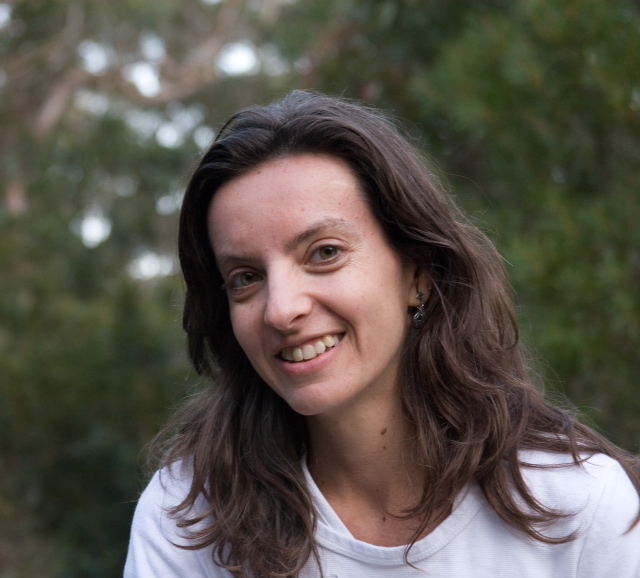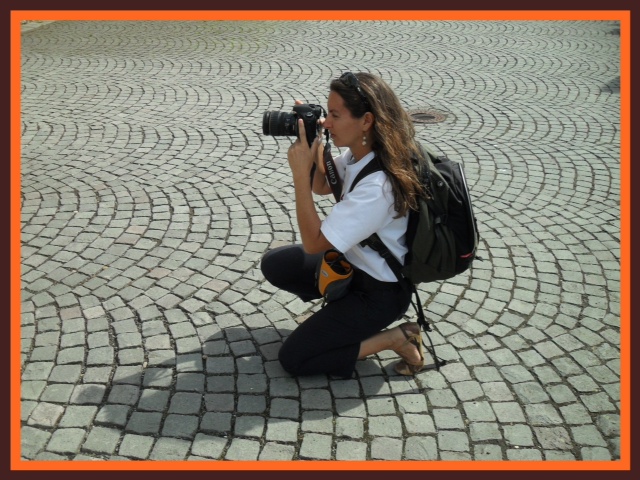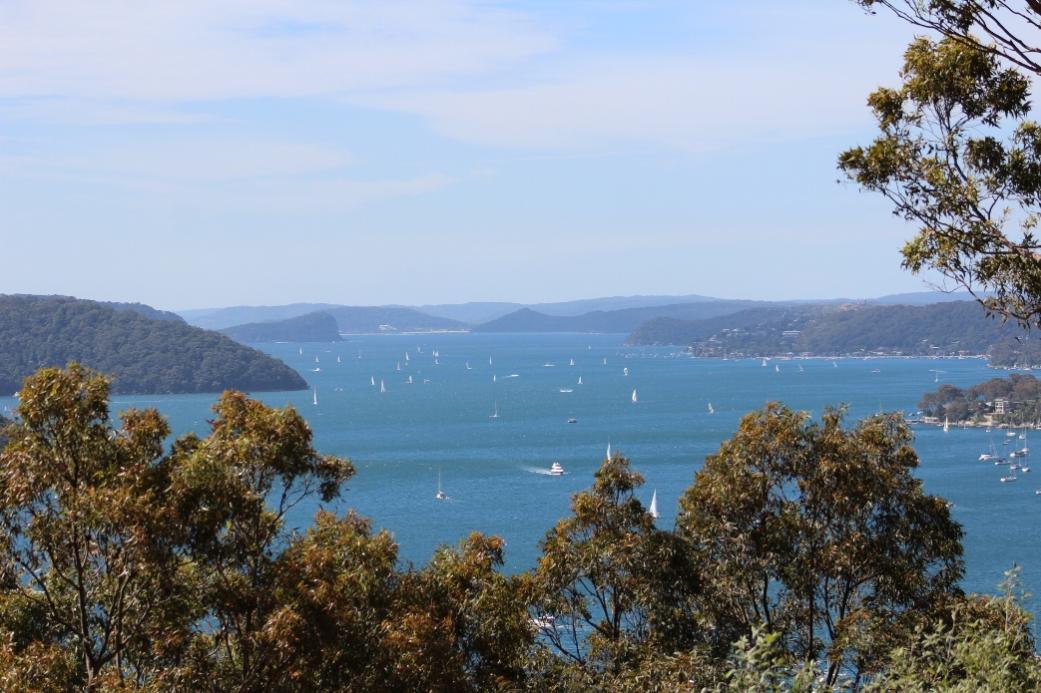October 8 - 14, 2017: Issue 332
Adriana Labate


Scotland Island photographer Adriana Labate is the lady behind those wonderful images of the restored through bush regeneration Elsie Track we shared a few months ago.
A few hours spent looking at and through her wonderful creations in themes listed in Galleries of 'Aether, Nature, Dust Storm 2009, Aquaplay, Fine Art, Wildlife, Sydney City, Nautical, Lightpainting, Abstract' shows an understanding and connection with her subjects and a brilliant understanding of and capturing of light - these are Visions - and whether something abstract or acute is shown, you feel pretty calm, nay, blissful, after spending just a few minutes visiting her online exhibition at: adrianalabate.foliohd.com
With so much digital photography and so many photographers, where everyone can now take a 'picture', it's good to see those who can transform a good capture into a well thought out and executed Art are pursuing such excellence and prepared to pass on their knowledge. Chosen as one of the Exhibitors at the upcoming Four Elements 'Air' Exhibition, November 2-12 at the Creative Space, North Curl Curl (105 Abbot road), Adriana transforms even the most everyday sights into something else.
Adriana is a consummate Photographer who shares some of those Visions as our October 2017 Artist of the Month - we think she's brilliant, creates wonderful works. To open her online exhibition here, a small insight into the Artists herself:
When and where were you born?
I was born in São Paulo, the biggest city of Brazil, on 4th January 1973.
Where did you grow up?
I grew up in São Paulo with my parents and brother. São Paulo is a very built-up, dynamic and crowded cosmopolitan city. I miss the affordable cultural activities - and being able to shop until 10pm every day! However, I definitely don't miss the rushed and stressed crowds, the lack of green outdoor public spaces and the huge gap between rich and poor that unfortunately leads to a high degree of violence. We used to spend our school holidays at the nearest beach where my grandparents lived. There we experienced freedom and being in touch with nature, in special the ocean and marine life. These holidays were very significant in building up my passion for the ocean and a desire to live around it and here I am now living on an island! A dream come true!
Where did you go to school?
I am thankful to my parents for sending me to private catholic schools in São Paulo as public schools are generally not very good in Brazil. Interestingly, the public universities are the best ranked and it's essential to have a good primary and secondary education to pass the selection process for attending a high standard university degree - for free!
Did you go onto university or pursue some other form of further education?
I got into one of the best public universities in Brazil - Unicamp - to study Biological Sciences. I have always been very studious and passionate about animals and the natural world. I remember flicking through a zoological encyclopaedia and being intrigued about this funny egg laying mammal - the platypus. That was what brought me to Australia. If I could choose to live a passage of History, I would like to be Charles Darwin's assistant during his voyage onboard the Beagle (and of course, the expedition photographer).
When and WHY did you first become interested in photography?
My father likes photography and he always had good photographic gear. During the 80's he would be the only dad photographing or recording the ballet presentation at school - very different from today! He gave me and my brother an automatic Kodak camera when I was probably 7 years-old. I've still got some of the photos I took with it. I did like taking pictures but the real interest in learning and understanding photography came during the university days when I was 19. I was going on a caving trip and decided I needed a proper camera so I borrowed my dad's fully manual Minolta SLR - which is great if you know how to use it! My dad gave me quick instructions but I came back home with only one reasonable image. A complete failure! From then, I knew I had to learn the principles to understand how to use a manual camera and a whole new world opened up to me.
How did you develop this?
I have spent the last 16 years studying photography in all its aspects - technological (as it's necessary), historical (which has been an amazing experience) and philosophical (the most intriguing and unfortunately the least discussed). During this time I have attended formal courses along with practical workshops conducted by renowned professional photographers and curators in Brazil. I learnt to develop film and I had the chance to play in the B&W darkroom which was an incredible experience. I mastered my dad's Minolta camera but later on I surrendered to the digital technology and bought my first DSLR as digital photographs are low cost, easy to store and readily available. However, after a couple of years I felt that it was time to go back to film as I had the opportunity to build my own B&W darkroom in a spare bathroom. I took a course in historical processes such as cyanotype, anthotype and construction of pinhole cameras. My experimentations with image creation have resulted in a more artistic approach to photography.
Whom are your favourite photographers or artists from whom you have drawn inspiration and/or influence?
I could mention so many... I admire Andre Kertesz for his street photography, Alfred Stieglitz because he advocated photography as a serious art form; the creativity of Man Ray which inspired some of my darkroom experiences and the pioneerism of Diane Arbus for breaking social tabus. Ansel Adams' landscape photography always took my breath away and for wildlife I pick Frans-Lanting. Real inspirations are Evgen Bavcar and Pete Eckert, both very successful blind photographers with touching life stories. From Brazil I take inspiration on the works of Sebastiao Salgado which exposed poverty and social injustice globally and the less famous Miguel Chikaoka, who uses photographic workshops as a social inclusion tool - his work and motivation are just beautiful.
You also run Photographic classes and workshops - could you please share insights into themes and objectives for some of these?
The digital era made photography accessible to everyone but new generations don't quite understand the magical process of "writing with light" as they are just touching screens and promptly sharing images, nor do they know the numerous artistic possibilities of self expression using photography creatively.
During the last few years I have developed workshops for all ages such as: "Thinking Photography" which promotes the understanding of the principles and artistic possibilities of photography and also a discussion about the importance of imagery in our lives; "The Magic of Light: Pinhole Camera" which is a great way of teaching the physics of image formation and it facilitates the development of skills such as concentration, self-control, self-expression through building and using a film pinhole camera. In "Lightpainting", people from all ages have fun creating images in the dark with torches.
Participants have produced images responding to a theme, an assignment, a story, a poem or a song. The technique is always associated with free thinking and imagination, being a great medium for artistic self expression. "My place" stimulates the visual perception of the environment and the participants' connection with their homelands; "Cabinet of Curiosities" is my new project and is inspired on the Natural history collectors from the Renaissance. Here, the participants are invited to build their own collection of intriguing images. All workshops can be adapted as one-on-one tuition for all photographic skills levels.
Your works have been selected for an upcoming local exhibition - what's this about and what works were chosen?
I am thrilled to be one of the selected artists using diverse medium participating in the upcoming exhibition at the Creative Space in North Curl-Curl.
This is the third exhibition of the series Four Elements organised by the northern beaches council. This time the theme is Air and I am participating with two complementing photographs. This was a great opportunity for me as I am currently working on a series called "Aether" which brings together my passion for photography and my passion for the natural world. Using an in-camera technique I aim to bring about the "spirit" of the 4 elements - Air, Earth, Fire and Water. My subjects are the elements and the living creatures who depend on them. For the Air component of this series I used feathers collected during my regular bush walks. The resulting images are quite unfocused and abstract. A selection of this series can be viewed on my website and the exhibition is on from 2 to 12 November.
You are a mum, you work, you develop your craft, how do you balance doing all this and keeping a smile on your face?
I don't think I could do everything very well at the same time. I always respected myself by prioritising one or two areas of my life at one time. Since my daughter's birth in 2014 I am being a mother above everything else because it makes me happier than any other experience I've ever had. I left my full time job what in return, gave me the mind space to rethink my professional aspirations. So, in between nappy changes and sand castles, I caught myself planning new photographic workshops and working on projects that were hibernating in my head. I am back to giving photography tuition which I really enjoy doing and I am a volunteer committee member of Scotland Island Kindy. It's not easy to juggle everything but all of these are areas of personal interest so not hard to keep a smile on my face!
What's coming up in the future - what would you like to do next, or further along?
I always had great interest in using photography as a form of Art Therapy. I had the opportunity to work with disadvantaged children overtime and witness behavioural changes as their interest in creating great images grew. I am starting to research ways of getting myself the skills to develop it.
I also want to explore anthotypes (images fixed by natural photosensitive chemicals found in plants) to create an environmental awareness project.
What are your favourite places in Pittwater and why?
Pittwater is a very special area as it combines beautiful natural scenery with boating lifestyle. Clareville beach is a perfect picnic spot; I love the walk to Barrenjoey lighthouse, amazing views from there; sailing past Lion Island towards the open ocean during whale migration is also a favourite. There is a very pleasant bush walk track from Mackerel beach to Resolute beach. The Basin is a perfect day out with the family as it offers calm waters, abundant wildlife (including wallabies) and basic amenities. Of course, I love living on Scotland Island as it still doesn't have street lights and the noise only comes from birds.
What is your motto for life or a favourite phrase you try to live by?
As I grew old, I learnt that "Carpe diem" is definitely the best motto. I also like "Be kind to everyone including yourself". I'm doing my best to teach my daughter to appreciate the beauty in the world and do her best to preserve it respecting all living things including herself.
